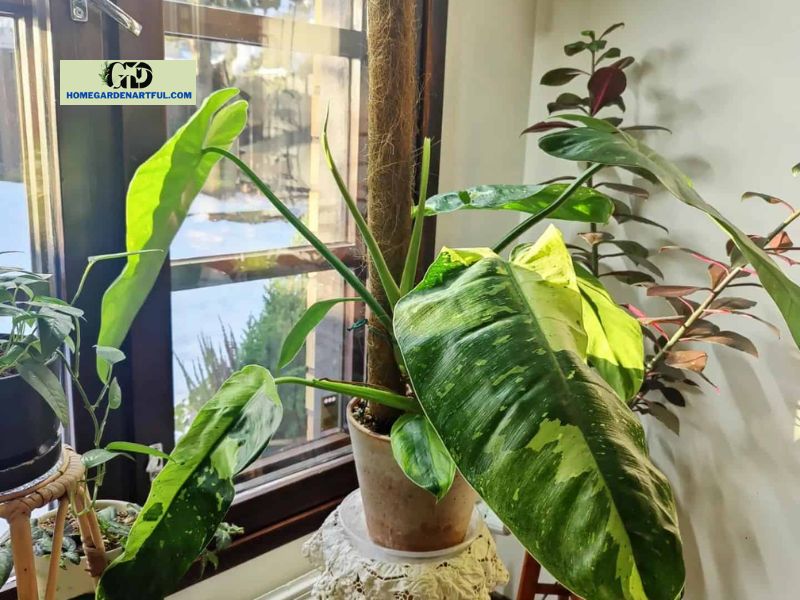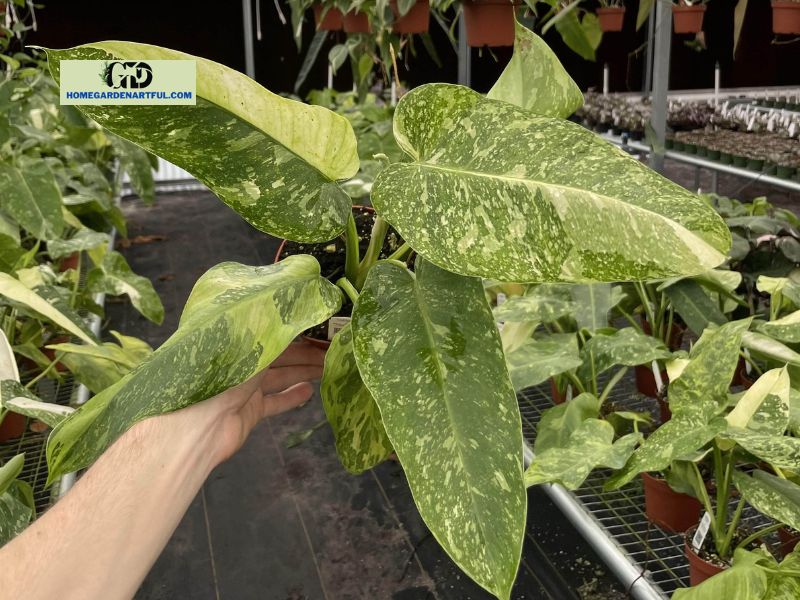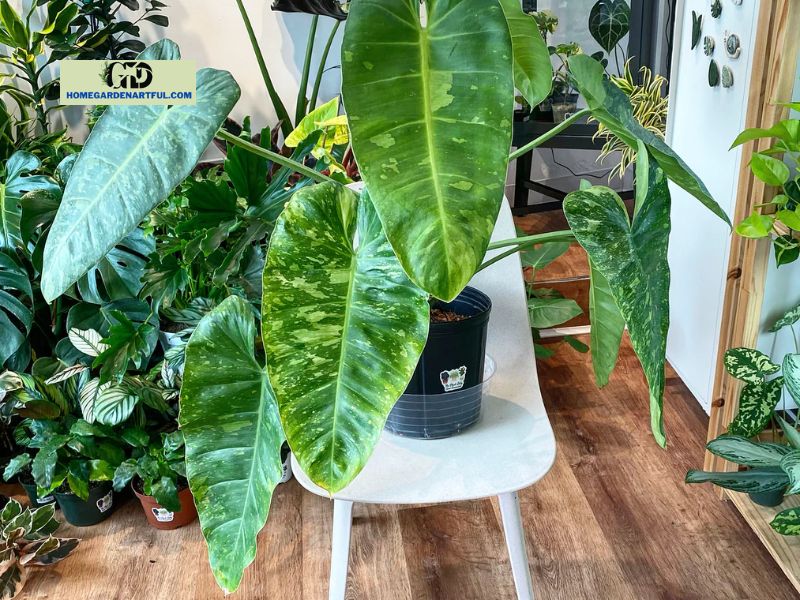Have you ever heard about Philodendron Jose Buono? The majority of plant parents select a Philodendron variety as their first indoor plant. They’re lovely and tough, making them excellent for novices. However, not many plant parents are familiar with the Philodendron Tasmania, often known as “Jose Buono”. This cultivar can be more difficult to find and pricey than the average houseplant. In light of this, you’ll want to be certain that you have the necessary tools to get the most out of your plant. Discover at homegardenartful.com!
How to Take Care of a Philodendron Jose Buono

Like other cultivars in this family, your Philodendron Jose Buono requires similar maintenance. To make sure your plant is the most attractive and healthy version of itself, there are specific steps you may take.
Lighting and Placement
When grown indoors, Philodendron Jose Buono flourishes in a bright space that gets 6 to 8 hours of sunlight from early in the morning to midday. Because a strong afternoon sun might burn the foliage, the morning sun is preferred. If you would rather keep your plant outdoors, be sure to shield it from direct sunlight to avoid damaging the leaves.
Watering
The Philodendron irrigation routine you employ Jose Buono is crucial due to their susceptibility to root rot. Make sure your plant is prepared for watering and don’t leave extra water for the roots to soak up. When the top inch of the soil is dry, experts advise watering. For those who have moisture meters or wish to dig their fingers into the ground, this is fantastic. Neither appeals to me, but I can’t say for you.
Soil and Potting
Your soil must be granular, well-draining, and slowly decomposing. Once the plant reaches maturity, you won’t need to report it frequently. For normal soil or peat-based combinations, coco coir is a great substitute. The coir decomposes gradually and drains well.
You should pick a planter that doesn’t dry out too much while selecting one. On the other hand, you don’t want the roots to be sitting in water or for the planter to hold too much water. Plastic planters are my preference because they have excellent drainage yet don’t hold onto water for very long.
Temperature and Humidity
Your Jose Buono performs best at temperatures between 70° and 80° F. Although the plant can withstand temperatures as low as 55°F, temperatures as low as 50°F can permanently harm your plant. The plant needs protection from frost if you keep it outside because it cannot resist subfreezing temperatures.
Jose Buono requires a relative humidity of 60–80% to develop effectively because he is accustomed to the high humidity of the jungle. Lower relative humidity will result in the browning of the leaf tips or a failure of the leaves to unsheathe. If you observe this, you might want to think about getting a humidifier.
Fertilizer
As a light feeder, the Philodendron Jose Buono doesn’t require a lot of nutrients to thrive. The lovely white variegation is particularly vulnerable to burning from too much fertilizer.
During the growing season, fertilize your Jose Buono once a month with a diluted, nitrogen-rich fertilizer. Early spring until mid-autumn make up the growing season.
During the winter, the plant goes dormant, so no fertilizer is required. Fertilizer can burn the roots and leaves of your plant if it is applied when it is not actively growing, which may lead to the early death of your plant.
Growth Rate and Repotting

As a young plant, the Philodendron Jose Buono is quickly developing. Once your plant reaches maturity, you will only need to report it every one to two years because it is a slower-growing cultivar.
It’s time to move to a larger pot when roots can be seen sprouting out of the bottom of your planter. The ideal time to repot is in the spring or early summer if you can wait until then.
Common Issues
Despite being tough, Philodendron Jose Buono has its share of issues. With Philodendron Jose Buono, mealy bugs, spider mites, root rot, and dust are common issues. It can be difficult to deal with and permanently get rid of spider mites, but it is unusual that your Philodendron would have several issues at once.
Root Rot
Phlox with Jose Buono is prone to the root fungus known as root rot. If you don’t address root rot, your plant can die. Avoid overwatering and make sure your plant is in clumpy, well-draining soil to avoid this disease. Make sure not to allow water lingering in the bottom of your plastic planters if you’re like me and use decorative planters to hold your plants.
Pests
Philodendron pests Although Jose Buono is resistant to the majority of pests, he occasionally draws mealy bugs and spider mites. Many times, maintaining the right level of humidity is sufficient for keeping spider mites at bay. Make careful to regularly inspect the underside of the leaves of your plant for bugs. Regular pest control will help keep pests away from your plants.
Dust
Many large-leaf plants frequently experience dust issues, especially when kept indoors. When I see that my leaves are dusty, I will wipe them down using a microfiber cloth and a spray bottle of water. Compared to other products and “hacks” you may see to help the leaves of your plant shine, this is the most effective for the health of your plant.
Jose Buono Philodendron Propagation

Philodendron Jose Buono can be multiplied using either seeds or nodes. Through node cuttings, propagation is most frequently accomplished. The plant will need to blossom and pollinate, which is unusual, in order to produce seeds. Additionally, if you plant flowers, be sure to use the seeds right away because, in the opinion of other plant experts, they do not have a long shelf life.
To spread your plant’s nodes:
- The optimal cutting will have at least 1 leaf in addition to the node, so pick the areas you want to remove.
- Cut a slit along the stem with a clean, sharp blade.
- Place your clippings after pruning them in your preferred rooting media.
You can transplant the clipping to a chunky, aroid soil blend once your plant has at least 2 inches of root growth. I advise waiting until the snip has secondary roots, that is, roots that are sprouting from the plant nodes.
Conclusion
Use a humidifier or place your Philodendron Jose Buono close to other tropical plants to maintain high humidity levels.
But keep in mind to carefully arrange them away from your children and pets to avoid Jose Buono’s hostile temperament.


